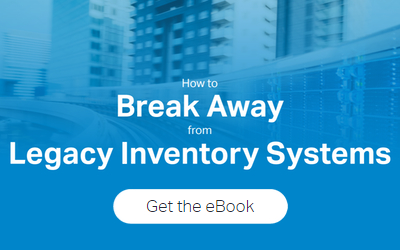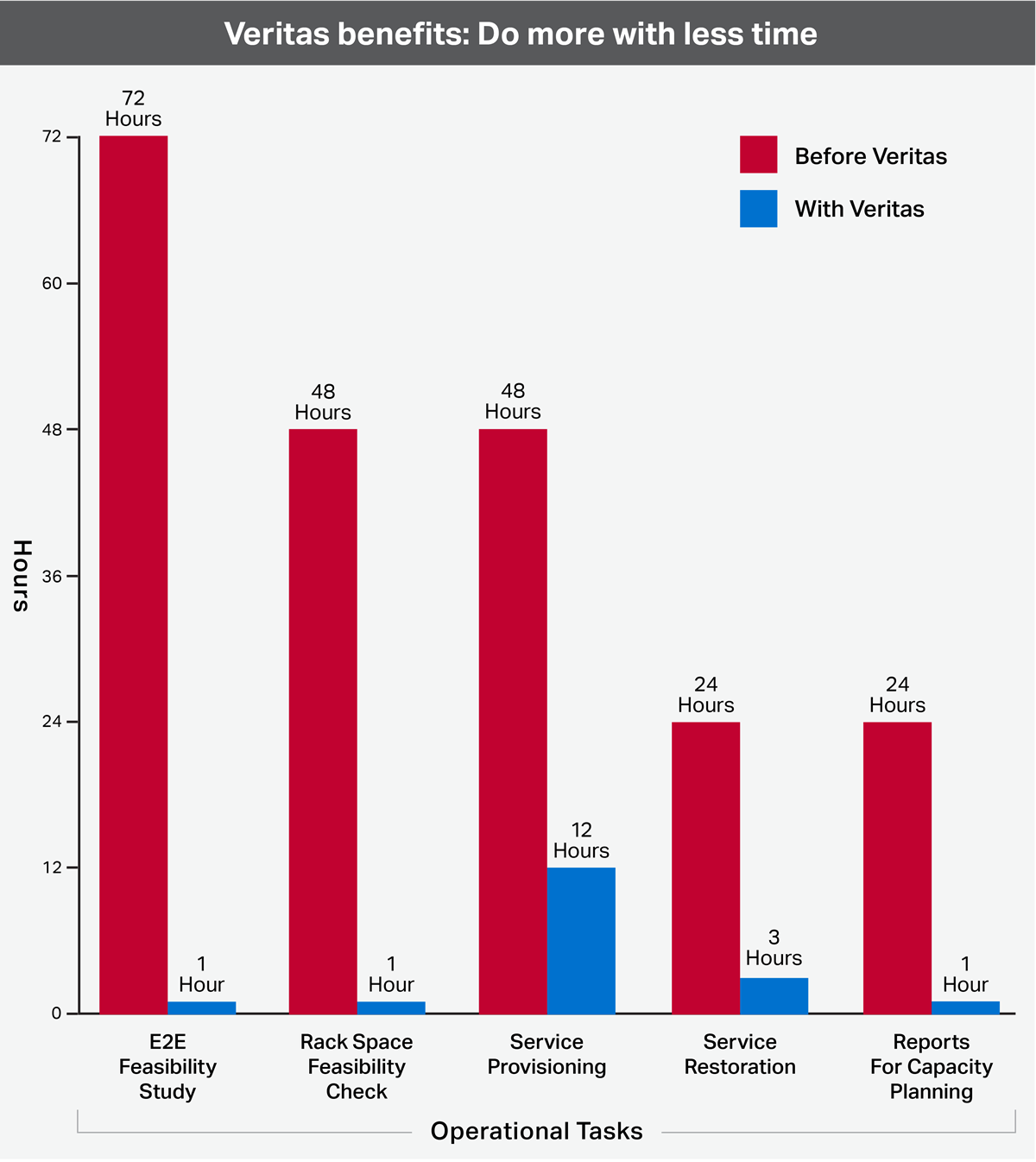Federation: Building the single source of truth for your network
Telstra was under pressure to modernize its network inventory system. The company had a massive amount of inventory to manage in its fiber, wireless, backhaul, satellite and undersea cable networks, supporting its enterprise and residential customers, as well as its telecom partners. However, their legacy inventory system was not sustainable. It was 17 years old, was costly to maintain and operate, and vendor support was ending in two years. The system was fragmented due to piecemeal modifications and burdened by cumbersome processes that prevented the company from responding quickly to customer requests or network faults.
These business and technology concerns impelled the company to replace its inventory system, but it needed a solution that would fulfill specific requirements and serve the company for years to come. In particular, the company wanted the capability to:
- evolve to the new system to avoid downtime and risks of a rip-and-replace;
- deploy the system in phases, delivering benefits at each phase;
- use its legacy and new inventory systems together for as long as necessary;
- view inventory on its live network dynamically; and
- support future equipment and service data models that will come with continued evolution of the network.
Blue Planet Inventory Solution
Blue Planet Inventory (BPI) software fulfilled Telstra’s stringent requirements. In particular, Telstra is taking early advantage of two key BPI features: federation and perspectives.
Data Federation: The beauty of federation is that it creates what we call “the single source of truth” for network inventory. BPI can be deployed as an overlay on multiple legacy operational systems and inventory platforms, unifying inventory information into a comprehensive view of network resources and customer services. Data is consolidated and discrepancies are reconciled, which ensures a high degree of data accuracy. Telstra used this feature to evolve to BPI smoothly, by running both old and new inventory systems at the same time to minimize risk until the organization is ready to decommission the legacy system .
Perspectives: BPI offers the capability to quickly present data sets tailored to different user groups and decision-makers in the organization, for example optical transport planners or Ethernet network engineers. This simplifies operations since relevant data that pertains directly to the user’s role can be retrieved quickly, eliminating the need to swivel-chair between multiple systems. Teams can do their jobs better and faster. Operations staff is more efficient, can respond to customer service calls faster, and can optimize processes for service delivery and network planning.
Finding capacity for a new service between two network locations previously required viewing 10 screens to evaluate potential paths, bandwidth, hops, latency, and other factors. Now, results and available routes can be displayed on a single screen with Google Maps, identifying capacity allocation in just 6 clicks.
Telstra’s Implementation
 Telstra is deploying BPI in three phases. The first phase, now complete, focused on its optical transport network (OTN). Phase 2 will bring in inventory for Ethernet and IP services, including customer-premises equipment (CPE). Phase 3 will bring in inventory for additional IP customer services as well as satellite, voice, wholesale and reseller services, and others.
Telstra is deploying BPI in three phases. The first phase, now complete, focused on its optical transport network (OTN). Phase 2 will bring in inventory for Ethernet and IP services, including customer-premises equipment (CPE). Phase 3 will bring in inventory for additional IP customer services as well as satellite, voice, wholesale and reseller services, and others.
Telstra is already using the solution to optimize design and provisioning when establishing services and allocating bandwidth for customers; visualize the network and services end-to-end in Google Maps for service delivery and assurance; plan capacity in as close to real time as possible; and easily troubleshoot network service issues to identify impacted services, automate service restoration, and inform associated organizations.
Now entering phase 2, the company plans to use the BPI solution to ensure inventory data is in sync with the live network through real-time network discovery, which will further improve the accuracy of the data and assessment of available capacity. The company will also begin using the solution to facilitate service orchestration and automation.

Benefits: The proof is in the numbers
Telstra’s implementation of BPI showcases how service providers can use the solution to de-risk inventory modernization, lower OpEx dramatically, and serve customers better. Activities that previously took days can now be done in hours or minutes (see Figure 1 above).
To give just one example, finding capacity for a new service between two network locations previously required viewing 10 screens to evaluate potential paths, bandwidth, hops, latency, and other factors. Now, results and available routes can be displayed on a single screen with Google Maps, identifying capacity allocation in just 6 clicks. Telstra says the efficiencies have improved employee productivity, morale, and engagement. The Veritas application is so user-friendly that it is not only a backend tool for operations engineers, but also sales teams can use it when talking to customers.
Because all of this can be done faster and more accurately, customers receive better service and are happier. Telstra says the system is enhancing its integrity with customers, because teams can talk to a customer about the status of their service at any deployment stage. In the future, Telstra expects that customers themselves will be able to use the solution to access timely information relevant to their services.
Conclusion
Here at Blue Planet, we have a motto that “inventory is at the core of all business decisions.” This is our way of saying service providers need a precise understanding of their network resources so they can run their networks more efficiently, automate processes, and serve customers better.
Telstra’s new system, built from the ground-up on BPI, is a tangible example of this concept. The implementation is showing how service providers can modernize their inventory systems to provide a true view of their networks and the services riding over that infrastructure. Migration to a new system can be achieved at your own pace, with minimal risk, to simplify inventory management for the benefit of your company, employees, and customers.



